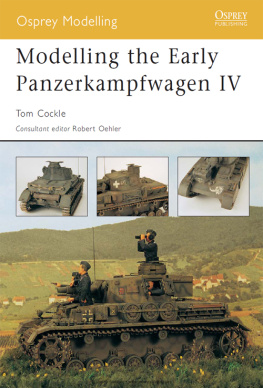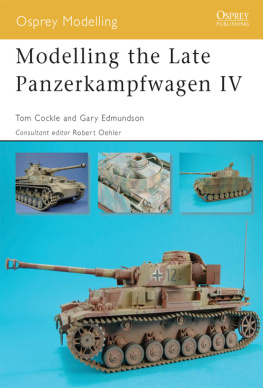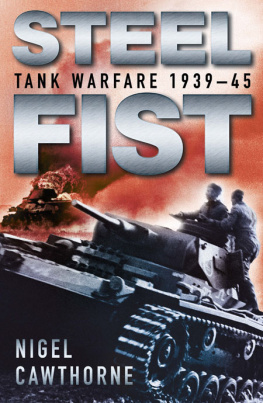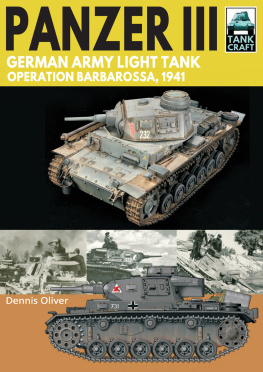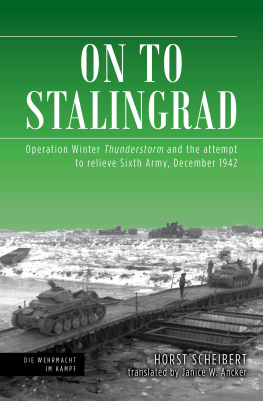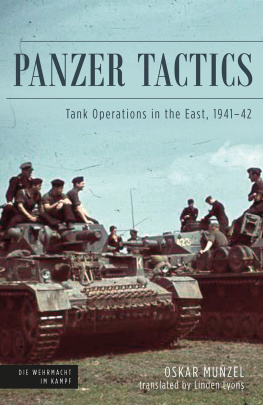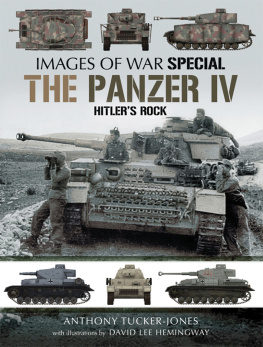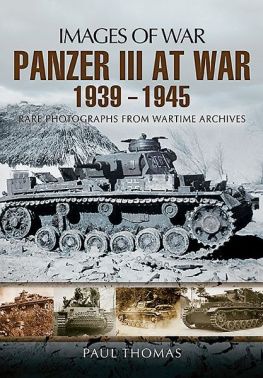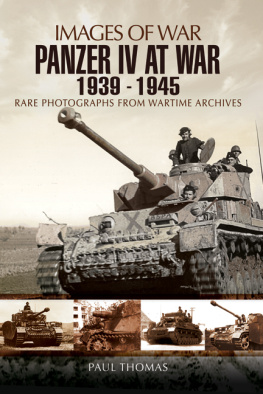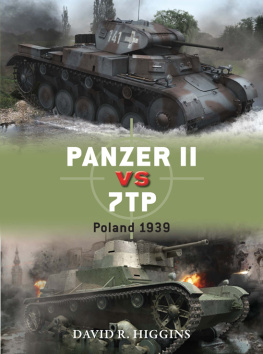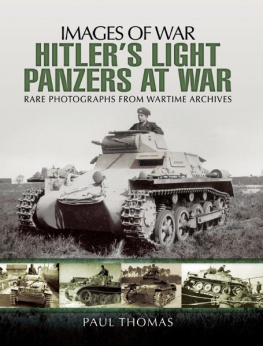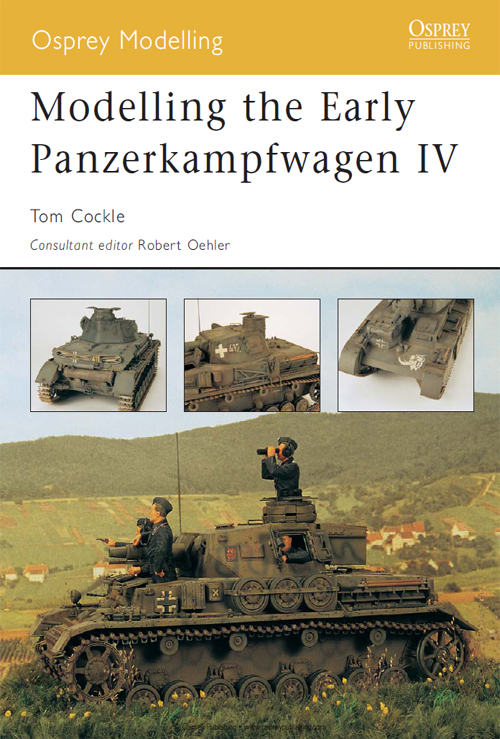Osprey Modelling 26
Modelling the Early Panzerkampfwagen IV
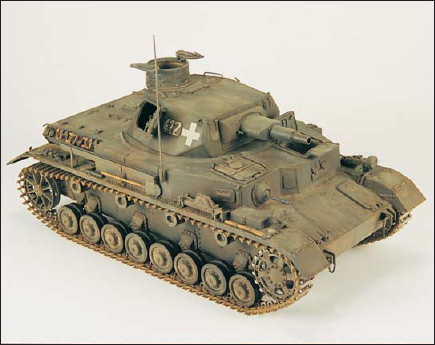
Tom Cockle
Consultant editor Robert Oehler
Series editors Marcus Cowper and Nikolai Bogdanovic
Contents
Introduction
The Panzerkampfwagen IV has often been referred to as the workhorse of the German Army in World War II. This important weapon went through several upgrades and improvements during its lifetime and was the only German tank to have been produced continuously throughout the entire war.
After several years of secret development, the Panzer IV Ausf. A made its first appearance in November 1937. By this time, the now familiar basic design of the tank had already been established. It would not change significantly through the war except for the replacement of the short barrel 7.5cm KwK L/24 gun with the longer and more powerful L/43 and L/48 gun starting with the production of the Ausf. G. A total of 35 of the Panzer IV Ausf. A were produced up to June 1938. Improvements made during the production run were minor; the most significant of which was the addition of a 30mm armour plate to the front of the hull.
Meanwhile, improvements were being made to the design and the next version, the Ausf. B was introduced in June 1938. The stepped front of the superstructure was straightened out and the machine-gun ball mount was dropped in favour of a pistol port and visor. Other improvements included adopting the commanders cupola from the Panzer III Ausf. D and installing single-piece drivers and radio operators hatches. There were only 42 of the Ausf. B manufactured from June to October 1938.
The Panzer IV Ausf. C was produced from October 1938 until August 1939. Externally, the Ausf. C did not differ much from the Ausf. B and the most significant improvement was an upgraded engine. An armoured sleeve was welded onto the internal mantlet to protect the coaxial MG34 barrel and a rain guard was installed over the drivers visor. A total of 134 of the Ausf. C were completed with another six chassis provided for conversion to bridge layers.
All three versions were used during the invasion of Poland on 3 September 1939, went on to see action in the west in 1940 and the Balkans and Soviet Union in 1941. Some even soldiered on into 1944.
The next version to be produced was the Panzer IV Ausf. D. It featured a return to the stepped front plate with a ball-mounted machine gun and a new external mantlet for the 7.5cm KwK L/24 gun. The lower hull front plate was increased from 30mm to 50mm on some of the later production vehicles. Other modifications included fitting 48 vehicles as Tauchpanzer, with deep wading equipment intended to assist in the planned invasion of England, and converting some for tropical employment by installing a redesigned engine deck with ventilation slits. During its production run, 232 were completed with 16 chassis provided for conversion to bridge layers. The Panzer IV Ausf. D first saw action during the invasion of France and the Low Countries in 1940 and, later, was used extensively in the Balkans, North Africa and the Soviet Union.
Experience gained in the Polish campaign against the 37mm anti-tank guns showed a need to increase the level of armour protection. This resulted in the introduction of the Panzer IV Ausf. E, featuring the addition of 30mm face-hardened plates to the front of the superstructure and 20mm plates to the sides. These were also retro-fitted to the Ausf. D. Other improvements included a redesigned drive sprocket, a redesign the rear of the turret to remove the bulge, the mounting of a new cupola and the installation of a new drivers visor. Some were also converted to Tauchpanzer and for tropical employment. There were 200 Panzer IV Ausf. E built with another four chassis provided for conversion to bridge layers. Too late to be used during the invasion of France and the Low Countries, they saw their first combat action in the Balkans in April 1941 and were also used in North Africa and the Soviet Union.
The last of the short barrel versions was the Panzer IV Ausf. F, often incorrectly referred to as the Ausf. F1, which was produced from April 1941 to February 1942. It featured 50mm armour plates on the front of the hull, superstructure and turret, as well as 30mm side plates. To carry the additional weight, the roadwheels were widened and the tracks increased to a width of 400mm. The drive sprocket design was changed to accommodate the new track and a new, tubular idler wheel was introduced. A new, shorter muffler was installed along with a flat, rectangular turret traverse engine muffler. An initial order for 128 vehicles was placed in 1938 but this was increased to 500 after the beginning of the war. The last 30 were completed with the long barrel 7.5cm KwK 40. This version was used in North Africa and the Soviet Union.
The history of the Panzer IV would not be complete without mentioning the Neubau-Panzerkampfwagen IV, commonly referred to as the Neubau-Fahrzeug. Design of this multi-turreted tank began in late 1932, and in 1934 Rheinmetall completed two soft-steel prototypes. It featured a turret fitted with a 7.5cm KwK L/24 and a coaxial 3.7cm KwK L/45. In addition, two smaller turrets were mounted; one in front of the main turret and one behind, each equipped with a single MG13 machine gun. In 1935, three more were manufactured from armour plate. In April 1940, they were shipped to Norway where they saw limited action with Pz.Abt.z.b.V.40.
In the following chapters, I will illustrate some of the techniques required to model the short barrel versions of the Panzerkampfwagen IV using currently available kits, tools and accessories, as well as how to create some of your own tools and parts along the way.
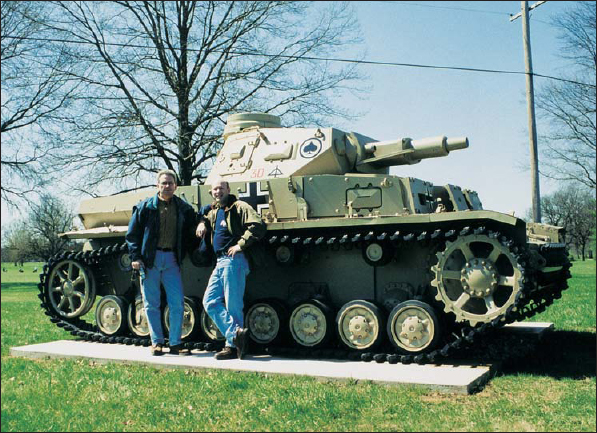
The author with Gary Edmundson and the Panzer IV Ausf. D at Aberdeen Proving Grounds, Maryland, in April 2003.
Materials
This section illustrates and describes some of the specialized tools and techniques used in the preparation of the models featured in this book.
Etched-brass folding tool
Etch Mate and Hold and Fold are two manufacturers of photo-etch bending tools. I used the 6.5in.-long Etch Mate for folding the Aber Panzer IV brass fenders.
Punch and die set
Historex and Waldron are two manufacturers of punch and die sets designed to punch hex bolts and round rivets from sheet styrene. I used the Historex Hexagonal Punch and Die to make many of the hex bolts and nuts used in the construction of the models in this book.
Rivet tools
Round rivets can be punched out of lead foil using the ends of various sized twist drills that have been filed flat to produce a sharp edge. The lead foil is placed on a soft eraser and the end of the drill bit, held securely in a drill, is forced gently through the foil. Another tool with a rounded end is pressed into each disc creating a convex rivet head.
Screw head tools
The sharpened end of a .036in. diameter stainless-steel tube salvaged from an old bottle of Humbrol plastic cement is used to press in perfect circles in the surface of a sheet of plastic. One end was filed around the outside and the other end around the inside to produce two sizes of screw. A sharpened jewellers screwdriver is then pressed in the centre to create the slot. Various sized hypodermic needles may also be used.

